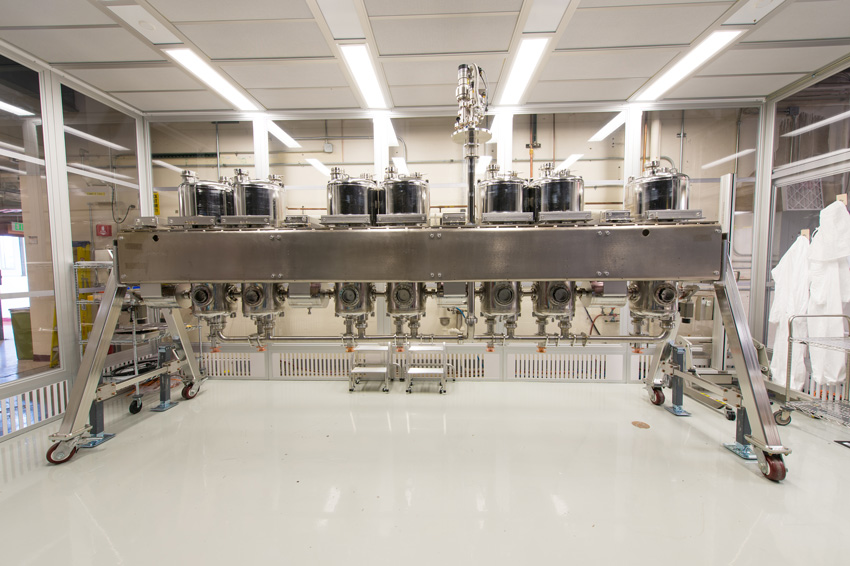Advances in Ion Accelerators Boost Argonne’s ATLAS User Facility
Argonne’s new superconducting cryomodule enhances its ATLAS heavy-ion accelerator.

The Science
A cryomodule comprising seven SC resonators operated at liquid helium temperature (-452°F) provides 17.5 million volts of accelerating voltage in the most efficient way. The resonators achieve high performance as a result of an optimized electromagnetic design combined with a unique fabrication technology for SC bulk niobium developed at Argonne National Laboratory.
The Impact
New directions in nuclear physics research are enabled by the availability of high-intensity heavy-ion beams from the ATLAS accelerator at Argonne National laboratory. Among the examples of possible applications of Argonne’s technology figure future ion accelerators for fundamental science as well as accelerator driven systems for nuclear waste transmutation or power generation, high-current accelerator-based isotope production facilities, and compact high-intensity proton accelerators for medical, industrial and homeland security applications.
Summary
The Physics Division at Argonne National Laboratory has successfully developed, constructed and commissioned with beam a new cryomodule for the Argonne Tandem Linac Accelerator System (ATLAS). This new cryomodule includes seven high-performance, superconducting (SC) quarter-wave resonators (QWRs) and replaces three modules with a total of 16 split-ring resonators in operation at ATLAS since the early 1980s. A number of technology improvements are implemented in the new cryomodule. Most importantly, an improved radio-frequency (RF) design, based on conical shaped inner and outer conductors provides the maximum possible accelerating gradient with both a large acceptance and minimal beam losses. In addition, fabrication methods, unique to ANL, include the capability to electropolish complete quarter-wave cavities, the use of wire electron discharge machining, and lower heat ‘keyhole’ electron beam welding. The new cryomodule of seven QWRs also includes four 9-Tesla SC solenoids with a design that incorporates return coils and does not require any magnetic shielding. RF testing of individual cavities has demonstrated that every cavity can provide about 3 MV in accelerating voltage over a 30 cm length, a world record performance for cavities of this type. Hence, this new technology dramatically reduces the footprint and cost of future ion accelerators.
Contact
Peter N. Ostroumov
Argonne National Laboratory
ostroumov@anl.gov
Funding
Basic research: Office of Science Nuclear Physics program under the American Recovery and Reinvestment Act (ARRA).
Publications
P.N. Ostroumov et al, “R&D Towards CW Ion Linacs at ANL”, Proc. of the Linac’12, p. 579.
M. P. Kelly et al, “Cold Testing of SC QWRs for ATLAS”, Proc. of the Linac’12, p. 348.
P.N. Ostroumov et al, “Efficiency and Intensity Upgrade of the ATLAS Facility”, Proc. of the Linac’10, p. 157.
Related Links
Highlight Categories
Program: NP
Performer: DOE Laboratory , SC User Facilities , NP User Facilities , ATLAS



